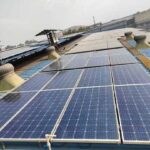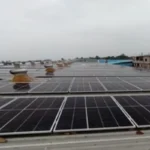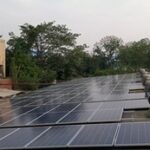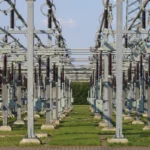Net Metering and Its Advantages Explained: How Solar Users Save More on Energy Bills
Net Metering and Its Advantages Explained: How Solar Users Save More on Energy Bills
with Mr. Pradeep Prakash Singhal, CEO (Smart Roof Solar)
Q1. Sir, we keep hearing about net metering in the solar energy sector. Could you please tell us what is this net metering all about?
A1. Let’s start by understanding the basics of Net metering. Currently all electrical connections are metered by a uni-directional meter because we are only consuming power and not generating any power. But, after installation of a solar power plant, we are also generating electricity. So, now there is a possibility that when we generate power but are not able to consume that power, the surplus power goes to the DISCOM, and to keep a record of the power consumed, power generated, and the power exported to the grid; the uni-directional meter is changed to a bi-directional meter by DISCOM. This bidirectional meter is also called export import meter. And this whole process is called net metering.
For better understanding let’s consider 3 scenarios.
Scenario 1
When the power is being generated and it is also getting consumed and there is no export, in this case, we pay to the DISCOM only for the imported power.
Scenario 2
When the power is being generated and it is not getting fully consumed, the surplus power is exported back to the DISCOM via the grid. In this case, you are billed net of import and export of units.
Scenario 3
When the power is being generated and it is totally not being consumed, for example, on a holiday, all the generated power is exported to the DISCOM via the grid. In this case you are billed net of import and export of units. The adjustment of bills is done monthly. In certain states, this is also done on yearly basis.
Q2. Please tell us the main advantages of net metering?
A2. The key advantage is that the factory can not only generate enough power for its day consumption but can also generate more power during sunny hours to neutralize its consumption during night hours.
Also, any power generated during holidays, gets utilized leading to zero wastage. Net metering facility gives a big boost to the bottom line of the industry.
Q3. Sir, what about the DISCOMs? Are they keen to give this net metering facility?
A3. DISCOMs are keen to give net metering facility to smaller consumers, not to industrial or large consumers. In fact, UP, West Bengal, and Assam have already stopped giving net metering facility to industrial consumers. Uttrakhand is also moving in the same direction.
Almost all the states have capped the net metering facilities to 500kW. In fact, this 500kW is also on the insistence of Honorable Minister for Road and Transport, Sh. Nitin Gadkari.
Q4. Sir in that case, what will happen to consumers who’ve already installed net metering at their solar plants?
A4. The benefits of net metering will continue to be available to these plants, even if DISCOMs later decide to withdraw net metering facilities. Net metering facility agreement with DISCOMs is of 25 years.
Q5. Sir, you mentioned that net metering is capped at 500kW. Does this mean, that factory owners cannot install solar plants more than 500kW?
A5. No, it is not like that. If the factories are having higher consumption continuous, then they can plan to install solar plants of more than 500kW also, but under captive route. Captive route means, if a consumer is installing solar plant only for self use. Factories need to ensure that they do not export power of more than 500kW at any given point of time. This is possible by installing a digital device, wherever more than 500kW solar plant is installed. Plant beyond 500kW needs to be connected to a different LT panel within the company.
Q6. Ok sir, what would be your final advice for industrialists who are, let’s say, considering getting a solar plant for their factories?
A6. The consumers should install solar plants with net metering to the maximum possible limit. Once you get net metering, it is for 25 years. If you got it and your competitors do not have it, you have got very strong competitive advantage.
Suggested Articles

Solar Rooftop Projects: Benefits of Intentional Islanding for Power Backup
Discover the role of intentional islanding in solar rooftop projects. Ensure continuous power supply, system safety, and reliable energy even during grid failures.

Is Your Solar PV Rooftop System Safe & Protected?
Worried about the safety of your solar rooftop system? Explore key tips, maintenance practices, and protection strategies to keep your Solar PV system secure and efficient

How to Choose Solar Panel Mounting Structures for Home, Industry & Commercial Installations
Choosing the right mounting structure is crucial for solar panel efficiency and durability. This blog explains various types of mounting structures for residential, industrial, and commercial solar installations, including rooftop, ground-mounted, and hybrid systems, to help you make an informed decision.

Researchers Develop Technique to Improve Durability of Perovskite Solar Cells
Researchers have introduced a new technique to enhance the durability of perovskite solar cells, paving the way for more reliable and long-lasting renewable energy solutions.

Affordable Solar Systems and Plants for Small and Medium Enterprises
Learn how SMEs can harness solar energy through tailored solar systems and plants to reduce electricity bills, improve sustainability, and boost efficiency.

Updated Rates of Solar Subsidy in Delhi: Cost, Eligibility & Benefits
Discover the latest solar subsidy rates in Delhi for 2025. This guide explains the updated costs, eligibility criteria, and benefits to help you maximize savings on your rooftop solar installation.

Rooftop Solar: Reduce Your Electricity Bill and Increase Savings
Discover how installing a rooftop solar system can help you save on electricity bills, reduce peak demand charges, and take advantage of government incentives.

Haryana’s GEOA 2025: A Boost for Captive Solar Plants and Wind Energy Developers
Haryana’s GEOA 2025 paves the way for growth in captive wind and solar energy projects with investor-friendly reforms.
